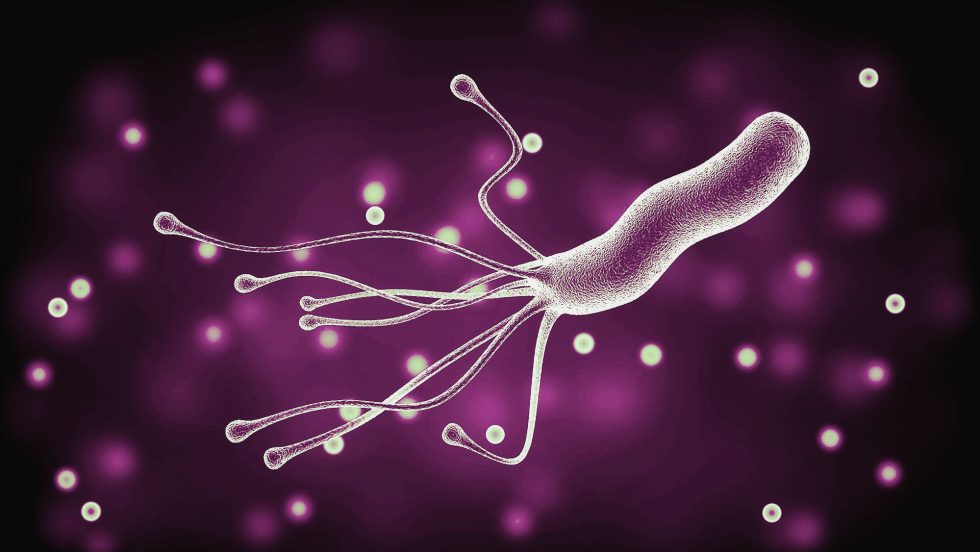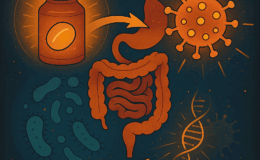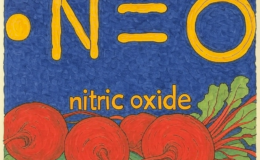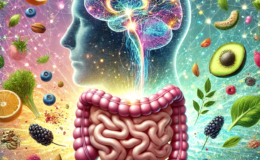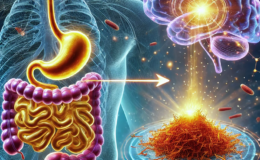Table of Contents
-
- Who discovered Helicobacter pylori (H. pylori)?
- How has H. pylori been passed down over the last 50,000 years?
- How long has the bacterium Helicobacter pylori (H. pylori) existed in humans?
- What are the most common symptoms of Helicobacter pylori (H. pylori)?
- How is Helicobacter pylori (H. pylori) infection diagnosed?
- Does the bacterium Helicobacter pylori (H. pylori) offer any benefit to the host?
- Which natural antimicrobials work best for Helicobacter pylori (H. pylori) eradication?
- In-vivo studies utilizing Black Seed Oil (Nigella sativa) to suppress or eradicate Helicobacter pylori (H. pylori).
- Which strains of probiotics are most successful in Helicobacter pylori (H. pylori) eradication?
- Can S. boulardii help in Helicobacter pylori (H. pylori) eradication?
- What pharmacological protocol is the most effective at eradicating Helicobacter pylori (H. pylori)?
- How does biofilm protect bacteria?
- What are H. pylori virulence factors?
- How can Helicobacter pylori (H. pylori) biofilm be broken down?
- What is dispase?
- Can Helicobacter pylori (H. pylori) cause Small Intestinal Bacterial Overgrowth (SIBO)?
- Can exposure to sunlight assist the body in eradicating bacteria, like H. pylori?
- Can eating chicken cause Helicobacter pylori (H. pylori) infection?
- Does having diabetes (high blood glucose levels) make H. pylori more aggressive and harder to treat?
- Do we inherit Helicobacter pylori (H. pylori) from our mother?
- What substances can inhibit or interfere with Helicobacter pylori (H. pylori) eradication?
- What foods should I not consume during Helicobacter pylori (H. pylori) treatment?
- Is there a vaccine to prevent H. pylori infection?
- The advantageous effects of melatonin on gastric disorders associated with H. pylori infection.
Who discovered Helicobacter pylori (H. pylori)?
Helicobacter pylori (H. pylori) was discovered by Australian researchers Barry Marshall and Robin Warren in the early 1980s.
In 1982, Dr. Marshall, a young physician and researcher at the Royal Perth Hospital in Western Australia, became interested in the cause of stomach ulcers after noticing that they occurred more frequently in people with low stomach acid. He hypothesized that a bacterial infection might be responsible for the condition and began culturing stomach samples to find the culprit.
Dr. Warren, a pathologist at the same hospital, noticed spiral-shaped bacteria in stomach biopsy samples and informed Dr. Marshall about his findings. Together, they published papers detailing their findings and proposed that the spiral-shaped bacteria, now known as H. pylori, caused peptic ulcers and gastritis.
The discovery was initially met with skepticism, as it was widely believed that the stomach’s acidic environment made it inhospitable to bacteria. However, Marshall and Warren’s research provided strong evidence supporting the bacterial cause of stomach ulcers. Their work ultimately led to a paradigm shift in the understanding of the disease and revolutionized the treatment of peptic ulcer disease.
In 2005, Marshall and Warren were awarded the Nobel Prize in Physiology or Medicine for discovering the bacterial cause of stomach ulcers.
How has H. pylori been passed down over the last 50,000 years?
H. pylori is a highly prevalent bacterial species that has been present in the human stomach for thousands of years. It is believed that H. pylori have co-evolved with humans for tens of thousands of years, and as a result, different strains of the bacteria have been passed down from generation to generation.
Several studies have investigated the evolution and spread of H. pylori strains across different populations and geographic regions. These studies have revealed that H. pylori has been transmitted horizontally (between individuals) and vertically (from mother to child) over time.
Horizontal transmission occurs through person-to-person contact, such as through oral-oral or fecal-oral transmission. This mode of transmission is believed to have played a significant role in the spread of H. pylori across different populations and geographic regions.
Vertical transmission, on the other hand, occurs from mother to child during childbirth or early infancy. This mode of transmission is believed to have contributed to the establishment and persistence of H. pylori within populations over time.
Several factors, including human migration, population expansion, and changes in social and environmental conditions, have influenced the spread of H. pylori strains worldwide. For example, human migration patterns have shaped the worldwide distribution of H. pylori strains, with certain strains being more prevalent in some areas of the world.
Overall, the transmission and spread of H. pylori over the last 50,000 years have been complex and influenced by multiple factors. However, the bacteria’s ability to colonize and persist within the human stomach has allowed it to remain a prevalent and essential human pathogen.
- H. pylori, transmission routes and recurrence of infection: state of the art – Link
- Horizontal versus Familial Transmission of H. pylori – Link
- H. pylori infection in family members of patients with gastroduodenal symptoms. A cross-sectional analytical study – Link
How long has the bacterium Helicobacter pylori (H. pylori) existed in humans?
It is now well established that H. pylori has been a highly prevalent pathogen in humans for over sixty thousand years. Infection occurs mainly in the intimate family environment or through vertical transmission. Today, it’s estimated that H. pylori infects 50% of the world’s population. This dramatic reduction is due to the introduction of antibiotics and their indiscriminate use since the 1950s.
- An African origin for the intimate association between humans and Helicobacter pylori – Link
- Helicobacter pylori in human health and disease: Mechanisms for local gastric and systemic effects – Link
What are the most common symptoms of Helicobacter pylori (H. pylori)?
Helicobacter pylori (H. pylori) infection can cause various symptoms, some common and some less so. The most common symptoms of H. pylori infection include:
- Dyspepsia (indigestion or discomfort in the upper abdomen)
- Nausea and vomiting
- Bloating and belching
- Loss of appetite
- Weight loss
- Gastritis (inflammation of the stomach lining)
Other less common symptoms of H. pylori infection can include:
- Stomach cancer
- Abdominal pain or discomfort, especially when the stomach is empty
- Fatigue
- Iron-deficiency anemia
- Stomach ulcers (peptic)*
What are the complications of peptic ulcers? Peptic ulcers can lead to complications such as:
- Bleeding in your stomach or duodenum
- A perforation, or hole, in the wall of your stomach or duodenum, which can lead to peritonitis, an infection of the lining of the abdominal cavity
- Penetration of the ulcer through the stomach or duodenum and into another nearby organ
- A blockage that can stop food from moving from your stomach into your duodenum
When do you seek the advice of a medical professional? Make an appointment with your healthcare provider if you notice any signs and symptoms that may be gastritis or a peptic ulcer.
Seek immediate medical help if you have:
- Severe or ongoing stomach (abdominal) pain that may awaken you from sleep
- Bloody or black tarry stools
- Bloody or black vomit or vomit that looks like coffee grounds
How is Helicobacter pylori (H. pylori) infection diagnosed?
H. pylori can be detected via a tissue sample, blood, stool, or breath tests:
- Histology – The examination of gastric mucosal biopsy specimens remains the gold standard for detecting H. pylori, with a sensitivity of 95% and a specificity of 98%. In addition, it enables the visualization of gastric morphology at any time.
- H. Pylori (Helicobacter Pylori) Breath Test / Urea Breath Test – During the H. pylori breath test, you will be asked to exhale into a balloon-like bag. The amount of carbon dioxide you exhale into this bag is measured to provide a baseline level for comparison. Next, you will be asked to drink a small amount of a pleasant lemon-flavored solution. The solution contains a substance called urea. Fifteen minutes after drinking the solution, you will exhale into a second bag. The amount of carbon dioxide you exhale into the second bag is also measured. H. pylori bacteria (if present) break down the urea in the solution you drank, releasing carbon dioxide in the breath you exhale. So, if the amount of carbon dioxide in your second sample is higher than in your first sample, you have a positive test for the presence of H. pylori.
- An H. pylori antigen stool test: This test looks for evidence of H. pylori (antigen) in a stool sample. The best test is a GI-MAP test, which also tests for H. pylori virulence factors.
- Upper endoscopy: A flexible tube is inserted down the throat into the stomach. A small tissue sample from the stomach or intestine lining is taken for testing for the presence of H. pylori.

Invasive, non-invasive methods and molecular testing to detect H. pylori and its antibiotic resistance.
Does the bacterium Helicobacter pylori (H. pylori) offer any benefit to the host?
Ongoing research is on the possible benefits of H. pylori infection for the host. Still, the current understanding is that H. pylori is a pathogen that causes harm to the host. H. pylori colonizes the stomach, and it’s associated with a wide range of gastric diseases, such as chronic gastritis, peptic ulcer disease, and gastric cancer. The bacteria produce urease, neutralizing stomach acid and creating a microenvironment that allows the bacteria to survive and thrive in the stomach. It also produces various virulence factors that can damage host cells, disrupt normal cell function, and evade the host immune system.
However, some studies have suggested that H. pylori infection is inversely associated with the development of some diseases, indicating that the presence of these bacteria may also be beneficial to the host, as is the case for reducing the risk of obesity, childhood asthma, inflammatory bowel disease, and celiac disease, among others.

Helicobacter pylori and extra-gastric disease association. Green squares represent positive correlations between Helicobacter pylori (H. pylori) and the disease, while red squares represent inverse correlations between H. pylori and the disease. Multiple sclerosis is shown in red and green because information suggests positive and inverse correlations. NAFALD: Non-alcoholic fatty acid liver disease; T2DM: Type 2 diabetes mellitus.
Which natural antimicrobials work best for Helicobacter pylori (H. pylori) eradication?
- Natural products and food components with anti-H. pylori activities – Link
- Exploring alternative treatments for H. pylori infection – Link
- H. pylori Treatment Protocol ™ The Original Since 2007 – Link
Several natural compounds have been studied for their antimicrobial activity against H. pylori. Still, the effectiveness of these compounds can vary depending on the strain of H. pylori and the dosage and administration method used. Some of the most commonly studied natural compounds for H. pylori eradication include:
- Sulforaphane, a compound found abundantly in broccoli sprouts, has been shown to kill H. pylori.
- Garlic, cranberry, green tea, and Manuka honey have been found to have antimicrobial activity against H. pylori and may reduce the colonization of the stomach.
- Cinnamon and Clove (Eugenia caryophyllata) are herbs traditionally used for medicinal purposes. They have been shown to have antimicrobial properties against various microorganisms, including H. pylori.
- In laboratory studies, clove oil and eugenol, the main component of clove oil, have been found to inhibit H. pylori. These studies have shown that clove oil and eugenol can effectively kill H. pylori in test tubes and reduce H. pylori colonization in animal models.
- Antibacterial Effects of Cinnamon Extract, Clove Oil, and Antibiotics against H. pylori Isolated from Stomach Biopsies – Link – Clove oil showed a remarkable antimicrobial effect against H. pylori.
- Green Tea Extract (EGCG) In vitro and in vivo activities of tea catechins against H. pylori – Link
- Black Seed Oil (see below)
In-vivo studies utilizing Black Seed Oil (Nigella sativa) to suppress or eradicate Helicobacter pylori (H. pylori).
Some in vivo studies have investigated the potential of Nigella sativa to suppress or eradicate H. pylori. One study published in the Iranian Journal of Pharmaceutical Research (IJPR) in 2022 – Link – found that a combination of Nigella sativa oil and triple therapy (a standard treatment for H. pylori) more effectively eradicated H. pylori than triple therapy alone. Another study published in the Saudi Journal of Gastroenterology in 2010 – Link – found that Nigella sativa oil effectively reduced the symptoms of H. pylori infection in patients.
Which strains of probiotics are most successful in Helicobacter pylori (H. pylori) eradication?
Probiotics are live microorganisms that can provide health benefits when consumed adequately. Some studies have suggested they may reduce H. pylori colonization in the stomach.
It’s important to note that most of these studies are in vitro and animal studies; more clinical trials are needed to confirm the safety and efficacy of these natural compounds. None of these have been FDA-approved as a monotherapy for H. pylori eradication and should not be used as a replacement for standard medical treatment.
According to the literature, Probiotics, which are live microscopic fighters against Helicobacter pylori gastric infections – Link, Lactobacillus casei, Lactobacillus reuteri, Lactobacillus rhamnosus GG, and Saccharomyces boulardii, can effectively eradicate H. pylori infection. Our results showed that in addition to decreasing gastrointestinal symptoms, probiotics can reduce the side effects of antibiotics (especially diarrhea) by altering the intestinal microbiome.
Probiotics improve the efficacy of standard triple therapy in eradicating Helicobacter pylori – Link – The addition of probiotics is associated with improved H. pylori eradication rates in children and adults, Asians and non-Asians. Lactobacillus, Bifidobacterium, Saccharomyces, and mixtures of probiotics appear beneficial in H. pylori eradication.
Exposure to bismuth and omeprazole without any probiotics also had a moderate and lower recovery rate than the Lactobacillus groups (Table 1). In summary, all groups treated with L. rhamnosus had the highest rate of H. pylori eradication and subsequent peptic ulcer recovery. The Anti-Helicobacter pylori Effects of Lactobacillus acidophilus, L. plantarum, and L. rhamnosus in Stomach Tissue of C57BL/6 Mice – Link
Can S. boulardii help eradicate Helicobacter pylori (H. pylori)?
Saccharomyces boulardii (S. boulardii) is a type of yeast that is sometimes used as a probiotic supplement. Saccharomyces boulardii has a positive effect in reducing the colonization of H. pylori in the human gastrointestinal system, but is not capable of H. pylori eradication when used as a single therapy. Saccharomyces Boulardii in Helicobacter Pylori Eradication in Children: A Randomized Trial From Iran – Link
Our meta-analysis shows that S. boulardii supplementation on standard eradication therapy significantly increased H pylori eradication rates and reduced the incidence of total side effects and some gastrointestinal adverse effects during eradication therapy. Saccharomyces boulardii as an adjuvant therapy for Helicobacter pylori eradication: A systematic review and meta-analysis with trial sequential analysis – Link
What pharmacological protocol is the most effective at eradicating Helicobacter pylori (H. pylori)?
The most effective pharmacological protocol for eradicating H. pylori is a combination of antibiotics and a proton pump inhibitor (PPI), often referred to as “triple therapy” or “quadruple therapy.”
- Triple therapy: A standard triple therapy regimen consists of a PPI (such as omeprazole or lansoprazole) taken twice a day, amoxicillin taken twice daily, and clarithromycin taken twice daily for 7-14 days.
- Quadruple therapy: This is the same as the triple therapy regimen, but it adds a third antibiotic, usually metronidazole, to target antibiotic-resistant strains.
It’s important to note that some H. pylori strains have developed resistance to antibiotics, so it’s crucial to use the appropriate antibiotics that are effective against the specific strain of H. pylori identified in the patient. Additionally, the success rate of H. pylori treatment depends on the geographic location and the antibiotic susceptibility of the H. pylori strain. It’s also important to note that even with a successful eradication therapy, there is a high recurrence rate without lifestyle changes and regular follow-up with the physician.
How does biofilm protect bacteria?
The formation of H. pylori biofilms decreases the efficacy of conventional eradication treatments.
Biofilm is a protective layer of microorganisms that adheres to surfaces and forms a matrix of extracellular polymeric substances (EPS). The EPS matrix provides physical and chemical protection for the microorganisms within the biofilm, making it more difficult for antibiotics and the immune system to penetrate and kill the bacteria. The EPS matrix can also protect bacteria from environmental stresses such as desiccation, radiation, and extreme temperatures. It can also act as a signaling network among bacteria, enabling them to coordinate and respond to environmental changes.
- More on H. pylori and biofilm here – Helicobacter pylori Biofilm Formation and Its Potential Role in Pathogenesis – Link
Steps of H. pylori biofilm formation. Planktonic H. pylori (green) adheres to the surface of gastric epithelial cells and secretes molecules to create extracellular polymeric substances (EPS) to form an early biofilm structure. Biofilm H. pylori (blue) is protected from the adverse external environment. After the biofilm matures, dead H. pylori (red) gradually appear due to the lack of nutrients in the biofilm, and the biofilm dispersal into the next cycle.
What are H. pylori virulence factors?
Helicobacter pylori (H. pylori) is a gram-negative bacterium that colonizes the stomach and is a major cause of peptic ulcers and gastric cancer. The bacteria has several virulence factors that allow it to survive and thrive in the stomach:
- Urease: H. pylori produces an enzyme called urease, which helps neutralize the stomach’s acidic environment.
- Flagella: H. pylori have flagella, whip-like appendages that allow the bacteria to move and colonize the stomach.
- Vacuolating cytotoxin (VacA): VacA is a toxin that can damage host cells and create vacuoles (small pockets) in the cytoplasm, disrupting normal cell function.
- Cag Pathogenicity Island (CagPAI): CagPAI is a region of the H. pylori genome that encodes for a type IV secretion system that allows the bacteria to inject virulence factors directly into host cells. Japan, for example, has the highest rate of gastric cancer worldwide, associated with the highest presence of CagA (57%).
- Adhesins: H. pylori also has surface proteins called adhesins, which allow the bacteria to adhere to the stomach lining and resist being washed away by stomach acid.
- Iron acquisition systems: H. pylori produces a siderophore called HupA. This allows the bacteria to acquire iron from host iron storage molecules, essential for their survival in the stomach.
How can Helicobacter pylori (H. pylori) biofilm be broken down?
- N-acetylcysteine (NAC) is the only molecule in clinical trials that has been found to be effective against H. pylori biofilms. Also, NAC pretreatment improves the outcome of patients with refractory Helicobacter pylori infection before initiating triple therapy.
That said, based on the literature, several methods can be used to break down bacterial biofilms:
- Chemical treatments: This method involves using enzymes, acids, or alkalis to dissolve the extracellular polymeric substances (EPS) that make up the biofilm matrix. Common chemicals include enzymes like dispase* and collagenase*, and acids like citric acid and hydrochloric acid.
- Antimicrobial agents: This method involves using antibiotics, biocides, or other antimicrobial agents to kill the microorganisms within the biofilm. It can be effective, but it can also lead to the development of antibiotic-resistant strains of bacteria.
- Physical treatments: This method uses physical therapies, such as ultrasound, heat, cold, and radiation, to disrupt the biofilm matrix and kill the bacteria.
- Disruption of quorum sensing: Most infectious diseases are caused by bacteria, which proliferate within quorum-sensing (QS)-mediated biofilms. Efforts to block QS in bacteria and disrupt biofilms have enabled the identification of bioactive molecules also produced by plants (see #6 Flavonoids). Quorum sensing disruption involves disrupting the chemical signaling pathways that allow bacteria within the biofilm to communicate and coordinate their activities. This can be done by using quorum-sensing inhibitors or other chemical compounds. Examples of quorum-sensing inhibitors include 1. Peptides such as lactocillin (Lactocillin is a thiopeptide antibiotic that is encoded for and produced by biosynthetic gene clusters in the bacteria Lactobacillus gasseri) and aureocin A53 (a bacterial antimicrobial peptide). 2. Small molecules such as halogenated furanones and brominated furanones.
- Phenazine derivatives.
- N-acyl homoserine lactones (AHL) analogues.
- Quorum quenching enzymes such as lactonases and acylases.
- Flavonoids are a class of naturally occurring compounds that have been shown to inhibit quorum sensing in some bacterial species. Some examples of flavonoids that have been found to inhibit quorum sensing include Quercetin, luteolin, and epicatechin. These flavonoids are found in many fruits and vegetables, including apples, berries, onions (quercetin), celery, thyme, parsley (luteolin), and cocoa and green tea (epicatechin). They have been shown to inhibit quorum sensing in Pseudomonas aeruginosa by binding to the LuxR protein. Hesperidin is a flavonoid found in citrus fruits such as oranges and lemons. It has been shown to inhibit quorum sensing in Vibrio harveyi by binding to the LuxR protein. Quorum Sensing and Phytochemicals – Link
It’s important to note that combining these methods may be more effective depending on the location and type of biofilm. Additionally, it’s essential to be aware of the potential side effects, such as damage to surrounding tissues, before applying a specific method.
What is dispase?
Dispase is a type of collagenase enzyme that breaks down collagen, the main structural protein found in the extracellular matrix of animal cells. Bacteria of the genus Bacillus produce it and is commonly used in tissue culture to dissociate cells from a solid substrate, such as a tissue culture dish.
Dispase is also used in some biofilm removal methods. It can break down the extracellular polymeric substances (EPS) that make up the biofilm matrix by degrading the collagen and other structural proteins that hold it together. However, Dispase is not specific to the EPS matrix of the biofilm; it can break down all collagen found in the area.
It’s important to note that dispase can damage cells and surrounding tissue, so it’s essential to use the enzyme at the appropriate concentration and for the proper amount of time. Additionally, dispase may not be effective against all types of biofilms, and a combination of methods may be needed to remove a biofilm effectively.
Can Helicobacter pylori (H. pylori) cause Small Intestinal Bacterial Overgrowth (SIBO)?
H. pylori is a gastric pathogen that colonizes the stomach but is not typically associated with small intestine bacterial overgrowth (SIBO). SIBO is a condition in which the number of bacteria or changes in the types of bacteria in the small intestine occur abnormally. The primary cause of SIBO is thought to be a dysfunction of the migrating motor complex (MMC), which is responsible for moving food through the gastrointestinal tract and preventing bacterial overgrowth in the small intestine.
Some reports of H. pylori being found in the small intestine. Still, it’s not clear if this is a primary cause of SIBO or if it’s a secondary condition that developed as a result of another underlying issue, such as previous gastrointestinal surgery or other medical conditions.
Research: The association of SIBO with H. pylori infection was explored in a 2017 study that tested 109 patients for H. pylori infection and SIBO. Nineteen of 36 patients, or 52.8% of H. pylori infection patients, were found to have concurrent SIBO. However, only 16 of 73 patients, or 21.9%, were without H. pylori infection met the criteria for SIBO. This data suggests that SIBO is 2-fold greater in H. pylori infection patients than in uninfected patients. These findings are supported by a 2018 study that found 53% or 62 of 116 patients with concurrent H. pylori infection and SIBO.
- Helicobacter pylori infection and small intestinal bacterial overgrowth–more than what meets the eye – Link
Can exposure to sunlight assist the body in eradicating bacteria like H. pylori?
Some evidence suggests that near-infrared (NIR) light from the sun may have antimicrobial properties and could potentially assist the body in eradicating bacteria.
NIR light has been shown to have a wide range of biological effects on cells, including the ability to increase cellular energy (ATP) production, promote wound healing, and stimulate collagen synthesis. Additionally, some studies have found that NIR light can have an antimicrobial effect against various microorganisms, including bacteria.
Exposure to sunlight, specifically ultraviolet (UV) light, has been shown to have antimicrobial properties and may assist the body in eradicating bacteria. UV light is a type of electromagnetic radiation that is emitted by the sun and can be divided, for our purposes, into two main categories: UV-A and UV-B.
Exposure to UV-B and UV-A light has been shown to have antimicrobial properties. UV-B has a bactericidal effect against various bacterial species, and UV-A reduces bacterial growth on the surface.
The wavelength of light that offers the most significant health benefit depends on the particular health concern and the type of light exposure.
In terms of UV light, UVB rays (290-320 nm) are responsible for producing vitamin D in the skin, which is essential for maintaining bone health and regulating the immune system. However, excessive UVB exposure can also cause sunburn and increase the risk of skin cancer.
Natural light is considered the most beneficial for general health and well-being. The blue light (around 480 nm) from the sun during the day can help to regulate circadian rhythm, improve mood, and boost alertness. On the other hand, red light (around 640 nm) has been shown to have anti-inflammatory effects and promote wound healing, and near-infrared light (around 830 nm) has been shown to increase collagen production in the skin, which may help to reduce the signs of aging.
The wavelength of light known to increase ATP production (the energy currency of life) is in the red and near-infrared (NIR) range, specifically around 660nm and 810nm. These wavelengths penetrate deep into the tissue and are absorbed by the mitochondria, the organelles responsible for producing ATP through cellular respiration. The absorbed light is thought to stimulate ATP production by increasing the efficiency of the mitochondrial respiratory chain and activating photoreceptors in the mitochondria.
Can eating chicken cause Helicobacter pylori (H. pylori) infection?
The primary way that H. pylori is transmitted is through close contact with an infected person, such as sharing utensils or living in close quarters with them. Eating food contaminated with H. pylori can also be a way to acquire the infection, but it is not considered a common way to get it.
Eating chicken is not a known risk factor for H. pylori infection. When properly cooked, chicken is considered safe. However, if it is not cooked correctly or consumed raw, it may contain bacteria that can cause foodborne illnesses, including H. pylori. Handling and cooking chicken properly is essential to avoid food poisoning.
Does having diabetes (high blood glucose levels) make H. pylori more aggressive and harder to treat?
Hyperglycemia increases the risk of gastric cancer in H. pylori-infected patients. High glucose could increase endothelial permeability and cancer-associated signaling. These suggest that high glucose may affect H. pylori or its infected status. This is an in vitro (test tube/petri dish) study – Higher glucose levels can enhance the H. pylori adhesion and virulence related with type IV secretion system in AGS cells – Link
Do we inherit Helicobacter pylori (H. pylori) from our mother?
It is also possible for a mother to transmit H. pylori to her child during birth or through breast milk. However, it is not certain that one inherits H. pylori from one’s mother. It can be acquired from various sources. Familial clustering of H. pylori infection: a population-based study – Link – In conclusion, our findings confirm, in an open population, a relation between H pylori infection in children and parents and that the social environment plays a role in spreading the infection.
What substances can inhibit or interfere with Helicobacter pylori (H. pylori) eradication?
- Advanced age (as a factor – see above link). Advanced age (not a factor). In conclusion, the elderly do not affect the efficacy or safety of a clarithromycin-based triple therapy for H. pylori eradication. H. pylori eradication with a clarithromycin-based triple therapy in elderly patients – Link
- Antacids: Antacids such as calcium carbonate, magnesium hydroxide, and aluminum hydroxide can neutralize stomach acid and reduce the effectiveness of antibiotics used to treat H. pylori.
- Proton pump inhibitors (PPIs): PPIs reduce stomach acid production and are often used to treat acid reflux and peptic ulcers. However, they can also reduce the effectiveness of antibiotics used to treat H. pylori.
- Bismuth compounds: Bismuth compounds, such as bismuth subsalicylate (Pepto-Bismol), have been used in the past to treat H. pylori, but they have been found to have limited effectiveness and may also inhibit the effectiveness of antibiotics.
- Antibiotic resistance: H. pylori bacteria can develop antibiotic resistance, making it more challenging to eradicate the infection. The widespread use of antimicrobial drugs has resulted in a worldwide increase in the prevalence of antibiotic resistance in H. pylori; 11-70% of clinical strains isolated in Western Europe are resistant to metronidazole, and up to 15% are resistant to clarithromycin.
- Smoking and alcohol consumption: Relationship between Helicobacter pylori infection and smoking and drinking habits – Link – In the current study, smoking was negatively associated with H. pylori infection. The risk of H. pylori seropositivity decreased linearly with cigarette consumption per day. Increased gastric acidity in the stomach through smoking may be a cause of the dose-dependent negative association between H. pylori and smoking. Drinking was negatively and dose-dependently associated with H. pylori positivity, although the effect of drinking was weaker than that of smoking. Relationship between alcohol consumption and active Helicobacter pylori infection – Link – Conclusions: In patients with functional dyspepsia, there is no significant association between active H. pylori infection and smoking. However, alcohol consumption appears to be associated with H. pylori infection.
- Causes of failure of eradication of Helicobacter pylori – Link
What foods should I not consume during Helicobacter pylori (H. pylori) treatment?
- Caffeine
- Carbonated beverages
- Pickled foods
- Spicy foods
- Low-fiber grains
Interaction between Dietary Factors and Helicobacter Pylori Infection in Noncardia Gastric Cancer: A Population-Based Case-Control Study in China – Link
Is there a vaccine to prevent H. pylori infection?
Not yet, but there is an ongoing, late-stage clinical trial testing the efficacy and safety of a vaccine. So far, in this trial, children given the vaccine were protected against H. pylori infection for up to three years. More: Status of vaccine research and development for Helicobacter pylori – Link
The advantageous effects of melatonin on gastric disorders associated with H. pylori infection.
The presence of Helicobacter pylori (H. pylori) infection has been linked to various gastrointestinal conditions, including gastric cancer. Research suggests that H. pylori infection might influence melatonin synthesis in gastric epithelial cells. Conversely, melatonin has demonstrated positive effects in managing gastric disorders, as evidenced by clinical trials and experimental studies. Additionally, melatonin exhibits protective properties by suppressing the DNA-damaging effects of diet-related mutagens that can initiate carcinogenesis in the gastric mucosa. It also counteracts the oxidative DNA damage caused by reactive oxygen and nitrogen species produced during H. pylori-induced gastric inflammation. While the association between H. pylori infection and gastric disorders such as gastritis, peptic ulcer disease, and gastric cancer is well-established, the precise underlying mechanisms remain unclear, and multiple pathways may be involved. Notably, some of the beneficial effects of melatonin in the gastrointestinal tract mirror the mechanisms contributing to the detrimental effects of H. pylori in the stomach. Consequently, melatonin may modulate these mechanisms, leading to the alleviation of H. pylori-related symptoms. (Blasiak et al., 2023)
COMPLEMENTARY 15-MINUTE CALL
Take your first step toward a renewed sense of well-being. Call today to arrange a complimentary 15-minute consultation.
Let’s discern whether my approach aligns with your needs.
I look forward to connecting with you at 714-639-4360.
